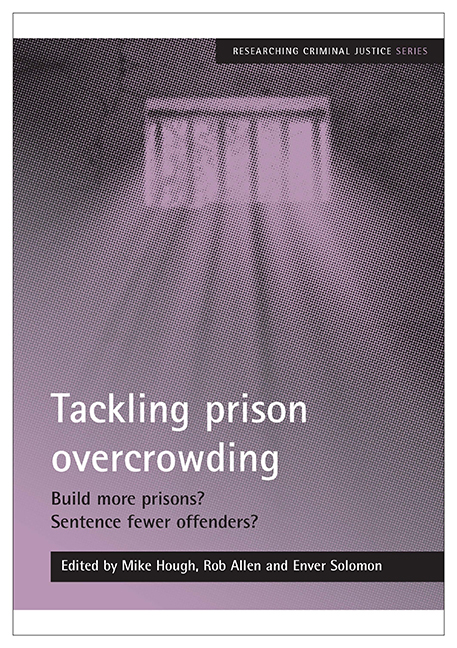Book contents
- Frontmatter
- Contents
- List of figures and tables
- Acknowledgements
- Foreword
- Notes on contributors
- 1 Introduction
- 2 The prisoners’ dilemma in England and Wales
- 3 Building on sand: why expanding the prison estate is not the way to ‘secure the future’
- 4 Towards more consistent and predictable sentencing in England and Wales
- 5 ‘Titan’ prisons: do size, efficiency and legitimacy matter?
- 6 Private punishment? An examination of the expansion, development and employment relations of private prisons
- 7 Reducing the use of custody as a sanction: a review of recent international experiences
- 8 Where now?
- 9 Endnote: latest developments in penal policy
3 - Building on sand: why expanding the prison estate is not the way to ‘secure the future’
Published online by Cambridge University Press: 25 March 2023
- Frontmatter
- Contents
- List of figures and tables
- Acknowledgements
- Foreword
- Notes on contributors
- 1 Introduction
- 2 The prisoners’ dilemma in England and Wales
- 3 Building on sand: why expanding the prison estate is not the way to ‘secure the future’
- 4 Towards more consistent and predictable sentencing in England and Wales
- 5 ‘Titan’ prisons: do size, efficiency and legitimacy matter?
- 6 Private punishment? An examination of the expansion, development and employment relations of private prisons
- 7 Reducing the use of custody as a sanction: a review of recent international experiences
- 8 Where now?
- 9 Endnote: latest developments in penal policy
Summary
There are lots of nice things you can do with sand; but do not try building a house on it. (C.S. Lewis, 1943)
Over the last decade the prison population has grown from 65,300 to 83,200. In the next decade the demand for prison places in England and Wales will outstrip the number planned. Others have, and will, debate the important questions this raises about the role prison plays in society, including whether we should use prison at all (see Walker, 1991; Hudson, 2003). This chapter, however, adopts a purely utilitarian view point. From this perspective, there seem to be only two solutions to a position in which the demand for prison places exceeds supply: build faster or change the way custodial sentences are used. The government has chosen to focus on the first option because this appears to be the only approach which avoids two political elephant traps: being portrayed as soft on crime; and, simultaneously, interfering with judicial independence.
This is the course this government – and the preceding Conservative administration – has been pursuing for as long as the prison population has been rising, so it would be unfair to claim that the report of an investigation led by Lord Patrick Carter (2007) persuaded the government to take it. However, Carter's report does reassure the government that it is feasible to physically build a way out of the problem, by confirming that the greater use of imprisonment has been associated with more offenders being brought to justice and reduced reconviction; and by asserting that, anyway, this is what the public want. A reexamination of the evidence on which these conclusions are based suggests that this reassurance is false comfort.
In this paper it will be argued that, contrary to Carter's claims, the increased use of imprisonment has not been driven by more offences being brought to justice; that prison reconviction rates have escalated as the population has increased; and that the public appetite for prison is more limited and more susceptible to reasoned argument than Carter acknowledges. Finally, it is argued that expanding the prison estate will generate, not satiate, demand.
A tale of two Carters
In 2003, Lord Carter of Coles presented a report on ‘managing offenders, to reduce crime and maintain public confidence’ (Carter, 2003, p 4).
- Type
- Chapter
- Information
- Tackling Prison OvercrowdingBuild More Prisons? Sentence Fewer Offenders?, pp. 25 - 42Publisher: Bristol University PressPrint publication year: 2008



